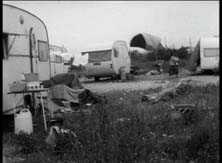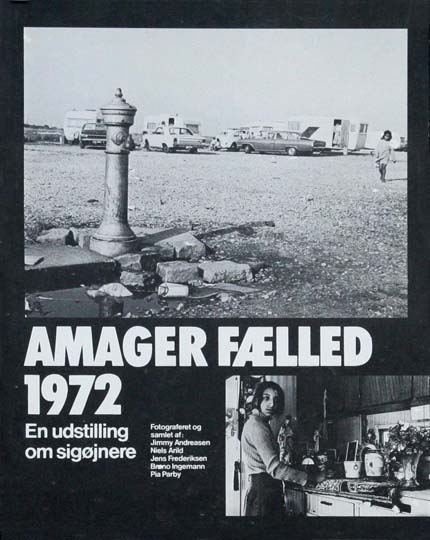  Quicktime videoclip Quicktime videoclip
(5 minutes -320 x 240 - 7,1 mb) |
The film ‘Amager Common 1972’
The documentary film was produced in 16 mm film over a period of four months. The members of the activist production group were inexperienced as film producers but had a fine network of professionals as advisors and mentors. Half of the group has continued in the field and has worked as professional filmmakers since.
Amager Common is a location on the outskirts of Copenhagen, a former dumping ground which in the seventies was unused ground – with one water pump. One. And it was here that the gipsies – as the Romani were called then – had placed their caravans. Shocking.
The photo of the young girl walking to the lonely water pump became the metaphor and symbol for the whole treatment of the gipsies and was later used on the poster for the upcoming exhibition.

One of the two experts in the film was the social worker Birgit Wohlert and in the interview in the film she says that “… in a country like Denmark we must be able to tolerantthat people maintain their ethnic minority identity, but at the same time a potential help can possibly destroy them as such. But thirdly one must say that it would be romantic to go backward, we cannot suddenly establish a kettle workshop.”
The film is 20 minutes long and has only little synchronous sounds. The Danish Film Institute supported the film group but the budget was small and the access to equipment was limited so much of the film recordings were only pictures and no sound. This has led to rather creative solutions in the construction the picture-sound-relation.
|
|
|